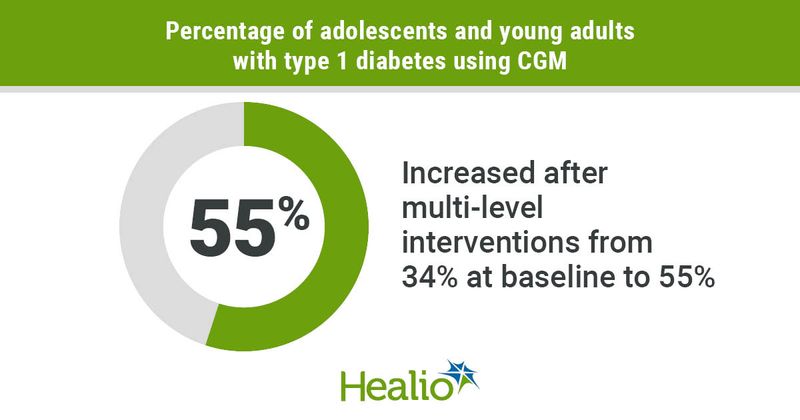Support, education, advocacy boost CGM use among youths with type 1 diabetes
Click Here to Manage Email Alerts
The percentage of adolescents and young adults with type 1 diabetes using continuous glucose monitoring at 10 diabetes clinics increased by 21% following multi-level interventions, according to a study published in Clinical Diabetes.

“The barriers to CGM uptake are structural, patient level and provider level,” Priya Prahalad, MD, PhD, a clinical associate professor of pediatrics – endocrinology and diabetes at Stanford Diabetes Research Center, told Healio. “By identifying the barriers to CGM use and developing targeted interventions, CGM uptake by adolescents and young adults with diabetes can be increased.”

Prahalad and colleagues analyzed data from seven pediatric and three adult diabetes clinics targeting CGM use among people with type 1 diabetes aged 12 to 26 years. The clinics are part of the T1D Exchange Collaborative Improvement Collaborative. Data were collected at the pediatric clinics from May 2018 to February 2020 and at adult sites from May 2018 to December 2019. Clinics developed interventions based on four key drivers: supporting patients starting CGM, coaching and education on effective CGM use for patients and clinical teams, and partnering with vendors and payors to improve access. Change in CGM use was compared from baseline to the end of the study.
“As part of the T1D Exchange Quality Improvement Collaborative, we share de-identified data with the registry,” Prahalad said. “The T1D Exchange Quality Improvement Collaborative performed the analysis to show different rates of CGM use across the collaborative. Participating sites looked more closely at their data and identified opportunities for site-specific quality improvement interventions to improve CGM use.”
Median CGM use increased from 34% in May 2018 to 55% by February 2020 (P < .0001), with seven of the 10 sites increasing CGM use. Five of seven pediatric clinics increased CGM use by at least 10%. The two pediatric sites where CGM use did not increase had CGM uptake higher than the median at baseline. Two of three adult clinics increased CGM use.
Prahalad said the findings unveiled several ways diabetes clinics can improve CGM uptake and continuation in their patient population.
“The process to increase CGM uptake is a team effort,” Prahalad said. “The care team should be bought into the importance of CGM use, present CGM to all patients and identify barriers to adoption. Once someone has a CGM, it is also important to support patients and families to prevent discontinuation of the device.”
For more information:
Priya Prahalad, MD, PhD, can be reached at prahalad@stanford.edu.
